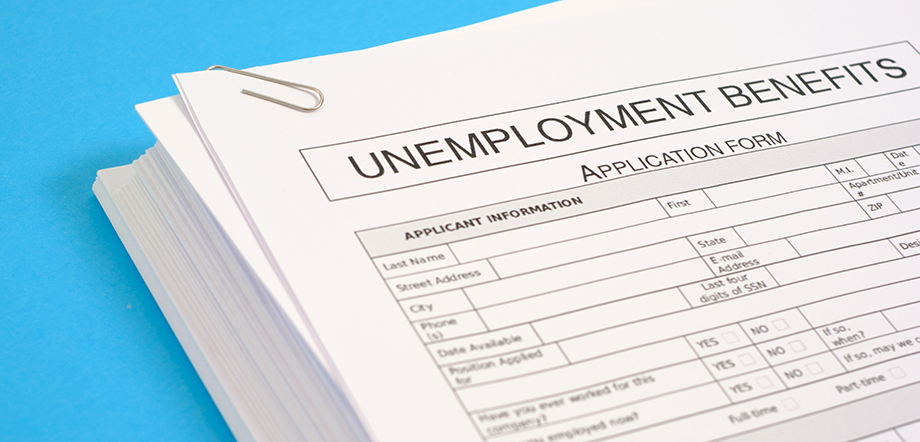Client Alerts
DOL Guidance Clarifies Unemployment Benefits Available Under the CARES Act
April 2020

Client Alerts
DOL Guidance Clarifies Unemployment Benefits Available Under the CARES Act
April 2020
On March 27, 2020, President Trump signed into law the Coronavirus Aid, Relief, and Economic Security Act (“CARES Act”), the third legislative stimulus package intended to alleviate the disastrous effects of COVID-19 on American businesses of all sizes. The Act expanded eligibility for unemployment benefits in multiple ways, most notably by: (1) expanding the categories of people eligible for unemployment benefits; (2) adding an additional $600 payment to unemployment benefits; (3) extending unemployment benefits by 13 weeks; and (4) providing funding to cover half the cost of unemployment claims incurred by nonprofit organizations and government entities. Recent Department of Labor (DOL) guidance clarifies some of the details of the benefits available under the CARES Act.
Pandemic Unemployment Assistance
The CARES Act creates Pandemic Unemployment Assistance, which provides for payment of unemployment benefits through December 31, 2020 for individuals who are not traditionally eligible for those benefits (such as independent contractors, the self-employed, and individuals with limited work histories), as well as individuals who have exhausted their unemployment benefits. According to the DOL guidance, however, individuals receiving benefits from a state-administered “additional benefits” program are not eligible to receive benefits under a Pandemic Unemployment Assistance program. “Additional benefits” programs generally permit an individual to continue receiving unemployment benefits after the expiration of those benefits, provided the individual satisfies a state’s eligibility criteria. Not all states have such programs. For example, Ohio, Illinois, Missouri, and Texas do not have “additional benefits” programs. But California has two – Extended Duration Benefits and California Training Benefits. Participants in those two California programs are not eligible to receive Pandemic Unemployment Assistance benefits.
When a state signs an agreement with the DOL to administer a Pandemic Unemployment Assistance program, an individual in that state is eligible to receive Pandemic Unemployment Assistance benefits if he or she is unavailable for work because:
- he or she has been diagnosed with COVID-19 or is experiencing the symptoms of COVID-19 and is seeking a medical diagnosis;
- a household member has been diagnosed with COVID-19, or the head of the individual’s household has died as a direct result of COVID-19;
- he or she is caring for a family or household member who has been diagnosed with COVID-19;
- he or she is the primary caregiver for a child or other person whose school or other facility has closed due to COVID-19;
- he or she is under quarantine as a result of a public health emergency related to COVID-19 or pursuant to the advice of a healthcare provider due to concerns related to COVID-19;
- he or she was set to commence employment but does not have a job or is unable to reach his or her job due to a public health emergency related to COVID-19;
- his or her place of employment has closed as a direct result of a COVID-19 public health emergency;
- he or she “has to quit his or her job as a direct result of COVID-19,” which, according to the DOL guidance, refers to individuals who were diagnosed with COVID-19 and who have recovered, but who are unable to work due to health complications caused by the virus; or
- he or she meets “any additional criteria” for eligibility established by the DOL, which, according to the guidance, allows independent contractor drivers – like Uber and Lyft drivers – to qualify for unemployment benefits if they have to suspend operations due to the pandemic, for example, if an emergency state or municipal order restricting movement makes continued operation unsustainable.
The recent DOL guidance instructs that some of the above circumstances are likely to be short term. For example, the guidance explains that a child’s school will not be “closed as a direct result of COVID-19,” for purposes of Pandemic Unemployment Assistance benefits, after the date the school year was originally scheduled to end.
For those individuals who qualify for Pandemic Unemployment Assistance, the Act provides retroactive relief, as it directs the Secretary of Labor to establish a process for making assistance under the Act available for weeks of unemployment that began on or after January 27, 2020. For states where the week of unemployment ends on a Saturday, the first week for which Pandemic Unemployment Assistance benefits may be paid is the week ending February 8, 2020. For states where the week of unemployment ends on a Sunday, the first week for which the benefits may be paid is the week ending February 9, 2020.
Generally, Pandemic Unemployment Assistance benefits are not available to individuals who have the ability to telework with pay or those who are receiving paid leave benefits (including sick leave). Per the DOL guidance, however, if an individual is receiving paid leave benefits for less than his or her customary workweek, or is teleworking with pay for fewer hours than the individual worked prior to the pandemic, he or she may still be eligible for a reduced Pandemic Unemployment Assistance benefit amount, provided that he or she would be eligible to receive a reduced benefit payment using the relevant state’s calculations for determining the amount of traditional unemployment benefits.
Federal Pandemic Unemployment Compensation
In addition to expanding the categories of people who are eligible to receive unemployment benefits, the CARES Act permits states to sign agreements with the DOL to administer Federal Pandemic Unemployment Compensation programs. These programs substantially increase the amount of unemployment benefits for recipients. When a state signs an agreement with the DOL to administer the program, individuals in that state receiving unemployment benefits will receive a $600 per week addition to their weekly benefit payment, regardless of how much they were paid while working. The additional payment will be made for weeks of unemployment ending on or before July 31, 2020.
The DOL guidance reveals that, in addition to individuals receiving traditional unemployment benefits or Pandemic Unemployment Assistance benefits, the CARES Act extends the $600 additional payment to individuals receiving unemployment benefits under numerous programs not specifically named in the Act, including:
- Unemployment Compensation for Federal Employees
- Unemployment Compensation for Ex-Servicemembers
- Pandemic Emergency Unemployment Compensation
- Extended Benefits
- Short-Time Compensation
- Trade Readjustment Allowances
- Disaster Unemployment Assistance
- Self-Employment Assistance Program
The recently issued DOL guidance clarifies another aspect of eligibility for the additional payment. In order to receive the $600 payment, an individual must receive “at least $1 of underlying benefits.” For example, if an individual has received compensation from work or from his or her employer during a given week such that his or her “underlying benefits” are reduced to nothing, that individual will not receive the $600 additional amount. This also means that even individuals who receive partial benefit payments – for example, those working reduced hours who still qualify for benefits – will receive the $600 payment.
The CARES Act was not clear about when the $600 additional payment would begin. The DOL guidance indicates that these payments will be available for weeks of unemployment beginning after the date on which a state enters into an agreement with the DOL to administer a Federal Pandemic Unemployment Compensation program, and ending on or before July 31, 2020. Notably, employers will not be charged for the $600 benefit. It is 100% federally funded.
As noted by several senators during negotiations regarding the Act, the result of the $600 increase in unemployment benefits is that, for low wage workers, there is little incentive to return to work. The math is simple. For example, in Ohio, a worker who made $10/hour, or $400 per week, before being unemployed could usually expect to receive about 50% of that amount, or $200, in unemployment benefits. The $600 increase from the CARES Act raises that amount to $800, double that worker’s usual wages. In Ohio, based on the benefits estimator on the Ohio Department of Job and Family Services website, for laid-off or furloughed workers with no dependents, the “break even” point – i.e., where the worker’s weekly pay would exceed the amount of the new benefit payment – is $27/hour, assuming a 40-hour workweek.
The increase in benefits under the Federal Pandemic Unemployment Compensation program may make it difficult for businesses that depend on low wage workers to convince their employees to continue working during the pandemic.
Pandemic Emergency Unemployment Compensation
The CARES Act also permits the states to agree with the DOL to administer Pandemic Emergency Unemployment Compensation programs, which allow laid-off or furloughed workers who exhaust their unemployment benefits to receive benefits for a longer period of time. For example, many states limit unemployment benefits to 26 weeks. Under the Pandemic Emergency Unemployment Compensation program, when an individual exhausts those 26 weeks of benefits, he or she may be eligible to receive benefits for up to 13 additional weeks. Individuals who receive these extended benefits are eligible to receive the $600 additional payment under the Federal Pandemic Unemployment Compensation program.
Pandemic Emergency Unemployment Compensation is available for weeks of unemployment beginning after the date on which a state enters into an agreement with the DOL, and ending with weeks of unemployment ending on or before December 31, 2020.
Assistance to Governmental Entities and Nonprofits
In one bright spot for some employers, the CARES Act will likely lessen the burden of unemployment claims on those employers who are “reimbursing” employers – i.e., those that pay unemployment benefits charges dollar for dollar. The Act provides for payments to states to cover half the costs of unemployment claims incurred by reimbursing employers, which are typically nonprofit organizations and government entities, through December 31, 2020.
ADDITIONAL INFORMATION
For more information, please contact:
- Melissa Z. Kelly | 216.696.2067 | melissa.kelly@tuckerellis.com
- Christine M. Snyder | 216.696.5593 | christine.snyder@tuckerellis.com
- Thomas R. Simmons | 216.696.5290 | thomas.simmons@tuckerellis.com
- Carl F. Muller | 216.696.5619 | carl.muller@tuckerellis.com
- Ndubisi (Bisi) A. Ezeolu | 213.430.3239 | ndubisi.ezeolu@tuckerellis.com
This Client Alert has been prepared by Tucker Ellis LLP for the use of our clients. Although prepared by professionals, it should not be used as a substitute for legal counseling in specific situations. Readers should not act upon the information contained herein without professional guidance.
